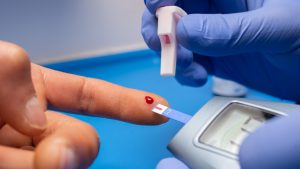Intermittent fasting has gained popularity as a health and wellness strategy, but it has also led to many myths and confusions, especially among people with diabetes. In this article, we will break down some of the most common myths about fasting and provide the evidence-based information you need to make informed decisions.
Myth 1: Fasting is Dangerous for People with Diabetes
Reality: While it’s true that fasting can pose risks if not managed properly, many people with diabetes can benefit from intermittent fasting under the supervision of a healthcare professional. Fasting can help improve insulin sensitivity and stabilize blood sugar levels, provided it is done in a controlled manner.
Myth 2: Fasting Always Raises Blood Sugar Levels
Reality: Although some individuals may experience a temporary increase in glucose levels initially, intermittent fasting can actually help stabilize blood sugar levels in the long term. By allowing the body to use its energy reserves, fasting can reduce the need for insulin and improve glucose regulation.
Myth 3: Fasting is Only for Weight Loss
Reality: While intermittent fasting can be effective for weight loss, its benefits go beyond that. It can also improve metabolic health, increase insulin sensitivity, and contribute to overall well-being. Many people with diabetes find that fasting helps them manage their condition better and adopt healthier eating habits.
Myth 4: You Can’t Fast If You’re Taking Diabetes Medications
Reality: While it’s crucial to be cautious about fasting while taking diabetes medications, it doesn’t mean it’s impossible. Many individuals successfully fast while on medication, as long as they work closely with their doctor to adjust doses and timing. Constant monitoring of glucose levels is essential to ensure safety.
Myth 5: Intermittent Fasting is Very Difficult to Follow
Reality: Although it may seem challenging at first, many people find that intermittent fasting becomes easier over time. Establishing a routine and finding a method that fits your lifestyle can make fasting more manageable. Additionally, many report that fasting helps them become more mindful of their eating habits.
Tips for Practicing Fasting Safely
Consult a Healthcare Professional: Before starting intermittent fasting, it’s crucial to talk to a doctor or nutritionist, especially if you have diabetes.
Monitor Your Blood Sugar Levels: If you choose to fast, make sure to regularly check your glucose levels to see how your body responds.
Choose a Method That Works for You: There are various methods of intermittent fasting. Find one that best suits your lifestyle and preferences.
Listen to Your Body: Pay attention to how you feel during fasting. If you experience unusual symptoms, adjust your approach or seek professional guidance.
Conclusion
Intermittent fasting can be a valuable strategy for people with diabetes, but it’s essential to demystify the misconceptions surrounding it. By understanding the realities of fasting and approaching it safely and mindfully, you can harness its benefits to improve your health and well-being. Always remember to consult a healthcare professional before making dietary changes. Every step toward a healthier lifestyle counts!

Type 2 Diabetes: Is It Really Reversible?
A recent National Geographic article [link] explores how type 2 diabetes could be reversible with the right approaches. This condition, which affects millions of people worldwide, has long been considered a chronic and progressive disease. However, recent research challenges this perception and suggests that with lifestyle changes and the right approach, remission is possible. The

How Do GLP-1 Drugs Compare? A Breakdown of Ozempic, Mounjaro, and Trulicity
GLP-1 receptor agonists have revolutionized diabetes management, with drugs like Ozempic, Mounjaro, and Trulicity leading the market. But how do these medications compare in terms of effectiveness, side effects, and patient outcomes? Let’s explore their differences and what they mean for diabetes patients. Understanding GLP-1 Medications GLP-1 receptor agonists mimic a natural hormone that helps

Why Has Medicare Spending on Diabetes Medications Skyrocketed in 5 Years?
In the past five years, Medicare spending on diabetes medications has increased nearly fivefold, reaching $35.8 billion in 2023. This surge has been primarily driven by the growing use of GLP-1 drugs such as Ozempic, Mounjaro, and Trulicity. But what is behind this cost escalation, and how does it affect patients and the U.S. healthcare

The Gut Microbiota and Blood Sugar Control: A Hidden Connection
The human gut is home to trillions of bacteria that play a crucial role in digestion, immune function, and even metabolism. Recent research has revealed a fascinating link between the gut microbiota and blood sugar regulation, shedding light on how the balance of microbes in our intestines can influence diabetes risk and overall metabolic health.

The Dawn Phenomenon: Why Blood Sugar Rises While You Sleep
For many people with diabetes, waking up with high blood sugar levels can be frustrating—especially if they didn’t eat anything overnight. This early-morning spike in blood glucose is known as the Dawn Phenomenon, and it happens due to natural hormonal changes in the body. But why does it occur, and how can it be managed?

The Influence of Red Light on Blood: Can It Improve Diabetes?
Type 2 diabetes is a metabolic disease characterized by insulin resistance and elevated blood glucose levels. In the search for complementary alternatives to improve glycemic control, red light therapy has gained attention due to its potential to enhance circulation, reduce inflammation, and optimize cellular function. But what does science say about it? ✨ What is

